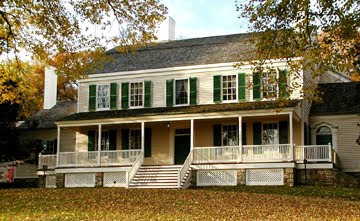 The Museum of the City of New York has reopened access to it’s collections to onsite researchers. On November 1, the Museum resumes accepting appointments from outside researchers and began offering a dedicated space for research as part of their newly renovated collection storage facilities.
The Museum of the City of New York has reopened access to it’s collections to onsite researchers. On November 1, the Museum resumes accepting appointments from outside researchers and began offering a dedicated space for research as part of their newly renovated collection storage facilities.
To learn how to submit an application for conducting onsite research, send a request to [email protected]. In your request indicate the collections of interest and describe your research need. Before contacting the Museum to inquire about a research appointment, visit the Museum’s Collections Portal (collections.mcny.org) which has over 100,000 digital images of photographs, negative, prints, drawings, postcards, and maps from the Museum’s collections.
The following onsite collections will be open to research appointments:
Manuscripts & Ephemera
Manuscript and ephemera holdings augment and complement other elements of the collections and are particularly strong in late eighteenth- and early nineteenth-century materials. The Manuscripts include papers related to notable New Yorkers, organizations, and events from the 17th century to the present. The ephemera collections include objects such as society dinner menus, trade cards, maps, Valentines, badges, Christmas cards, and material related to public ceremonies, special events, schools, sports, the shipping trade, transportation, statues and monuments, retail trade, and the police and fire departments.
Prints, Drawings, and Photographs
The Prints, Drawings, and Photographs Collection documents the built environment of the city and its changing cultural, political, and social landscape from its earliest days to the present. Photographic holdings include collections on Berenice Abbott, Jacob Riis, and the photographic archives of Gottscho-Scheleisner, LOOK Magazine, Byron Co., and the Wurts Brothers. Drawings range from18th-century pastel portraits and mural studies to political cartoons and architectural renderings. Specific collections include the archives of the Planning Board of the 1939 New York World’s Fair, the Harry T. Peters Collection of hand-colored Currier & Ives prints, and the Martin Wong Graffiti Collection.
Theater
The Theater Collection documents theatrical activity in New York City from the late 18th century to the present day. The heart of the Theater holdings is the John Golden Archive, which consists of approximately 40,000 folders, organized into files on productions, personalities, and performance spaces. The Theater Collection also holds collections on Burlesque, Circus, Minstrelsy, and Vaudeville. Files contain a wide range of material including photographs, contracts, correspondence, playbills, manuscripts, advertising materials, reviews, obituaries, clippings, sheet music, autographs, account records, prompt books, and ephemera.
The Museum also holds collections of Costumes and Textiles, Decorative Arts and Furniture, and Paintings and Sculpture- however, due to the special preparation necessary for handling these objects, access is extremely limited. For specific inquiries into these collections, email [email protected]








